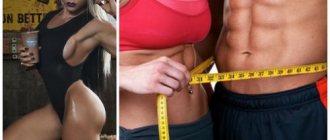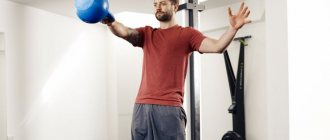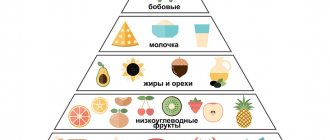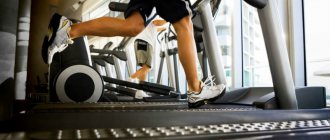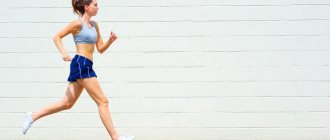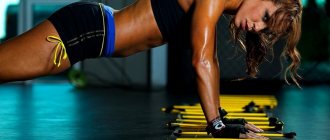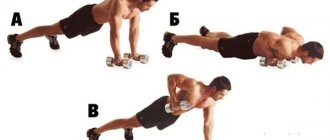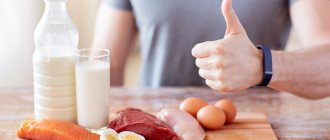If you feel like you've gained a few extra pounds, the bulking process hasn't gone very well, or you just want to look drier, then this article is for you. Here I will try to outline the basic principles and examples of training that will help you achieve your goal. However, I want to say right away that no amount of training can help you if you don’t improve your nutrition and tighten your diet. Make sure to read the article on our website about eating right for weight loss before you start training accordingly.
Types of workouts for weight loss
Low-intensity and high-intensity workouts
There are several approaches to such training, namely, they can be heavy, high-volume and low-intensity, or vice versa, high-intensity.
High-volume, low-intensity workouts are characterized by heavy weights (2-6 reps), a relatively large number of sets, and correspondingly longer rest times between sets. High-intensity exercises, on the contrary, often involve lighter weights and minimal rest between sets. In both cases, a person expends a lot of energy during training.
During heavy, low-intensity training, a lot of energy is expended during the actual exercise—it takes a lot of energy to handle heavy weights. Also, in this case, when performing multi-joint exercises, there is a greater release of hormones, including growth hormone, which helps in building muscle mass and burning fat. And during high-intensity training, calories are burned almost constantly due to increased heart rate and minimal rest.
Cardio and strength and mass training
An important aspect when training for weight loss is cardio, which cannot be neglected. In addition, you should be prepared that during the weight loss period you will lose some muscle mass, as well as strength indicators. For this reason, I strongly recommend not stopping at any one type of training, including strength and mass training in order to keep yourself in shape. From my experience, during my last cutting period I was able to not only get rid of excess fat, I also increased my strength and even gained some muscle mass.
The most common mistakes when trying to lose fat
Don't restrict yourself too much in food - if you consume too few calories, then during intense training, in addition to fat, muscle may also begin to break down.
- Don't sabotage your workouts by eating too much of the wrong foods, especially sugar.
- Remember that losing weight and getting rid of fat takes some time. Exotic diets that promise quick weight loss are usually unsustainable in the long term and can be detrimental to your health.
Examples of workouts
In this article I will look at the following types of training:
- Circuit training
- Bodyweight workout without equipment
- High volume low intensity training
- Low Volume High Intensity Training
All of these workouts (except the last one) are performed on the whole body. I give just such examples because they work very well for weight loss. There are also split workouts, which differ from weight gain workouts only by increasing intensity or volume; I will not consider them due to their triviality.
Circuit training
Circuit training is a type of high-intensity training. Its essence is to perform exercises in a row, one after another, with minimal rest. You can perform from one to three circles, the number of repetitions for each exercise is 12-15. Here's an example of one day of training using this program:
- Bench press
- Bent-over barbell row
- Leg press in the simulator
- Lying leg curls in the simulator
- Seated overhead press
- Shrugs
- Standing biceps curl
- French press
- Ab crunches on the floor with a plate
- Seated calf raises
It is recommended to train 3 times a week; in the second training session, it is advisable to replace multi-joint exercises with isolating ones, and in the third, choose other multi-joint exercises (for example, replace the bench press with a bench press on an incline bench). The order of exercises here is not random and should not be changed for better effect: chest, back, legs, shoulders, trapezius, biceps, triceps, abs and calves. In addition, it is necessary to do cardio training every day for 20-30 minutes. This could be running on a treadmill or any other type of cardio exercise.
Bodyweight workout without equipment
Bodyweight training without equipment has a number of advantages: you don't need a gym and you can train anywhere. Such workouts also involve almost all the muscles of the body and are highly intense. I’ll give you an example of my favorite workout, which, in addition to the fat-burning effect, can also help you increase your strength. All exercises are performed with a rest time between each approach of 30-45 seconds, 5 sets and 30 repetitions:
- Pushups
- Reverse push-ups
- Squats
- Ab crunches
- Plank (60 seconds)
- Diamond push-ups
- Jump Squats
- Burpees (3 sets of 15, 10, 5 reps)
- Lunges forward
It is recommended to do this workout at least three times a week. High-interval running for 15-20 minutes every day is recommended as a cardio exercise.
High volume low intensity training
In this example of a high-volume, low-intensity workout, we will perform multi-joint exercises along with isolation exercises. The number of sets and repetitions for multi-joint exercises (m) is 2x4-6, for single-joint exercises (o) 2x12-15, rest time between sets is 2-3 minutes.
- Incline bench press (m)
- Wide grip vertical pull-down (m)
- Leg press (m)
- Standing Dumbbell Lateral Raise (o)
- Standing dumbbell curl (o)
- Extension with a dumbbell from behind the head (o)
- Leg extensions in a sitting machine (o)
- Seated leg curls (o)
- Standing calf raises (o)
- Hanging leg raises (o)
This type of training should be done 3 times a week, with 45 minutes of low-intensity cardio performed on rest days. You can also vary the number of repetitions each week to vary the training and load different muscle fibers: 8-10 and 15-20, 12-15 and 20-30 for multi-joint and single-joint, respectively. It is recommended to change the exercises and their nature from time to time (for example, in the 1st workout you do a compound exercise on the chest, and in the 2nd an isolating exercise).
Low Volume High Intensity Training
Low volume high intensity training. Mostly multi-joint exercises will be used here. Also, in this program, not the whole body will be worked out in one workout, but the upper and lower parts separately. Training should be carried out 3 times a week. In the first week, you will do two upper body workouts with one lower body workout in between. Next week it will be the other way around.
Upper body:
- Bench press, 2 sets 8-12 reps
- Military press, 2 sets of 8 reps
- French press, 2 sets of 12 reps
- Reverse grip pull-ups, 2 sets of 10 reps
- Bent-over barbell rows, 2 sets of 10 reps
Lower body + biceps:
- EZ barbell curls, 2 sets of 12 reps
- Hammer curls with dumbbells, 2 sets of 12 reps
- Calf raises, 1 set of 15 reps
- Straight-legged deadlift, 2 sets of 15 reps
- Leg press, 1 set of 20 reps
Rest time between sets is 30-45 seconds. Each subsequent workout, vary the exercises, focus on compound ones, but from time to time include isolating ones.
What percentage of fat is considered normal?
Body fat percentage is one way to measure your fat to lean mass ratio and track your progress over time. The American Council on Exercise considers the following body fat percentage to be normal:
| Description | Women | Men |
| Essential Fat | 10-13% | 2-5% |
| Athletic build | 14-20% | 6-13% |
| Athletic build | 21-24% | 14-17% |
| Average build | 25-31% | 18-24% |
| Obesity | >32% | >25% |
Less stress
Too much stress leads to overeating, drinking and other unhealthy habits. Stress also releases the hormone cortisol, which promotes fat storage. If there is a lot of cortisol in the body, it causes fat to be deposited in problem areas.
To combat stress, add some relaxing activities to your daily schedule. Take a bath, read, talk on the phone with a friend, play outside, walk, exercise, sleep. The better you control your stress, the better you will feel and the faster the benefits of exercise will be seen.
Hit the scales
Even if your goal is to look good in a top or bikini this summer, the scale isn't the best tool to measure your progress. "For most women, the mark on the scale is just a game," Kaltweiser says.
Instead of focusing on the scale, look in the mirror, at your clothes and how you feel.
“Don’t let the number on the scale determine what kind of day you’ll have today.” Remember, we're trying to reduce stress here, not increase it.
Worrying about your weight and its changes can have a negative impact on your diet and exercise plan.
If you don’t see any changes on the scale, you really want to give up everything.
Instead of focusing on the scale, look in the mirror, at your clothes and how you feel.
If your summer shorts fit much better than they did two weeks ago, that's progress, no matter what the scale says.
Water
Believe it or not, water is the best fat burner on the market. Your liver, which processes fat, needs a lot of water to function properly. Dehydration reduces the rate of fat burning and is bad for muscles and joints. If you want to stay hydrated, drink more.
We're sure you've heard the advice to drink 8 glasses of clean water a day. While this is a good start, your weight, diet, activity level, etc. will affect your water needs. Judge how much you need to drink by the color of your urine. If it is pale yellow to clear, then there is enough water. If it is deeper yellow, you should drink more water.
If you drink enough, you won't feel hungry. “Thirst is often confused with hunger,” says Team Gaspari athlete Ashley Kaltweiser, IFBB Bikini Pro. If you feel hungry, you may simply be dehydrated. If you suspect this is the case for you, simply drink a few glasses of water before eating.
Don't go on fad diets
While fad crash diets such as the grapefruit diet or the cabbage soup diet may help you lose weight quickly, they won't last long. Once you return to your normal diet, you will look worse than before you started the diet. What's more, these restrictive diets are deficient in key macronutrients that are important for health.
Kaltweiser says the best way to burn fat is with a diet that you can stick to for a long time. Sticking to the diet for longer than a week or two will help you burn fat faster and allow you to stay in shape for a long time.
More carbs
A low-carb diet can be a useful tool for burning fat. On the other hand, sticking to a low-carb diet for a long time and without breaks is harmful, it slows down the metabolism and leads to other negative consequences.
If you're following a low-carb diet, plan to eat carbohydrates at least once a week. This will not only help the fat-burning hormone leptin, but also your mental health.
Eat BCAA's
The amino acids leucine, isoleucine and valine are super important for muscle building and recovery, as they are absorbed in the muscles, bypassing the liver. This means they can be used as a source to build proteins for energy!
Wasiak recommends taking BCAAs before and after your workout to turn your body into a true anabolic powerhouse and better burn fat. BCAAs also help with recovery and indirectly help with dehydration.
BCAA's are the best choice for anyone who wants to be slim as they are calorie-free. So add a scoop to your shaker of water and enjoy!

